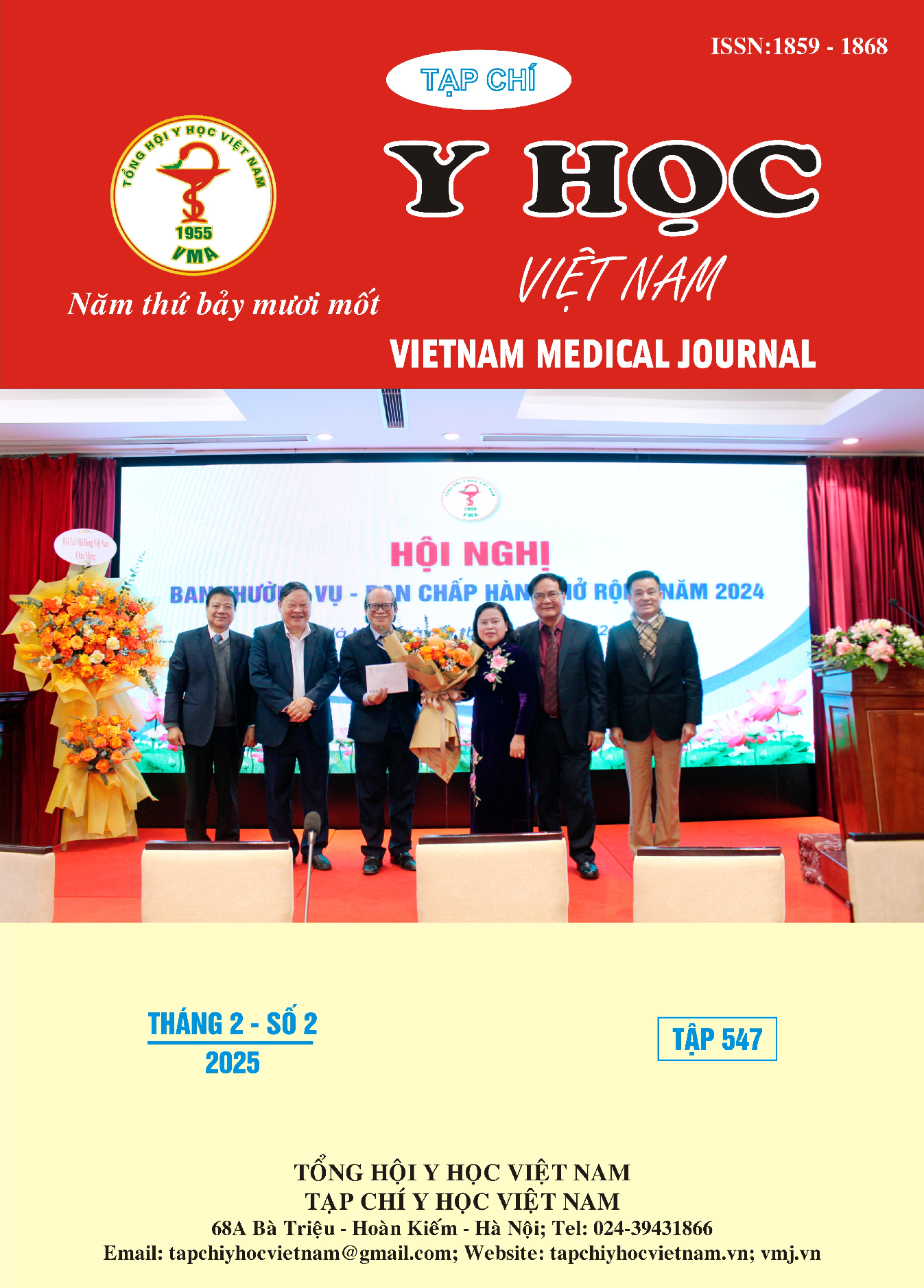FACTORS RELATED TO DOOR-TO-BALLOON TIME IN PRIMARY CORONARY INTERVENTION FOR ST- ELEVATION MYOCARDIAL INFARCTION PATIENTS AT THANH HOA GENERAL HOSPITAL
Main Article Content
Abstract
Objective: To determine the door-to-balloon (DTB) time in primary coronary intervention and related factors. Methods: A prospective study was conducted on 201 patients with ST- elevation myocardial infarction, using medical records. Results: The average of DTB time was 329.48 ± 313.90 minutes, with only 30.85% of cases having a DTB ≤ 120 minutes. Binary logistic regression analysis showed that patients aged ≥ 60 years and with symptom onset > 12 hours had more likely to have a delayed DTB time, with odds ratios of 2.402 [95% CI: 1.198 - 4.814, p=0.014] and 2.395 [95% CI: 1.189 - 4.823, p=0.015], respectively, compared to the other group. There was a statistically significant difference between the Door-to-CathLab time, the Door-to-Balloon time and the non-delayed DTB time with the non-delayed DTB time group is having shorter Door-to-CathLab time and DTB time compared to the delayed DTB group. Conclusion: DTBtime was shortened when the Door-to- CathLab time was improved.
Article Details
Keywords
ST- elevation myocardial infarction, door-to-balloon time, related factors.
References
2. Salari N, Morddarvanjoghi F, Abdolmaleki A, et al. (2023) The global prevalence of myocardial infarction: a systematic review and meta-analysis. BMC Cardiovasc Disord, 23(1), pp.206. doi:10.1186/s12872-023-03231-w
3. Karkabi B, Meir G, Zafrir B, et al. (2021) Door-to-balloon time and mortality in patients with ST-elevation myocardial infarction undergoing primary angioplasty. Eur Heart J Qual Care Clin Outcomes, 7(4), pp.422-426. doi:10.1093/ ehjqcco/qcaa037
4. Byrne RA, Rossello X, Coughlan JJ, et al. (2023). 2023 ESC Guidelines for the management of acute coronary syndromes. Eur Heart J, 44(38), pp.3720-3826. https://www.escardio.org/ Guidelines/Clinical-Practice-Guidelines/Acute-Coronary-Syndromes-ACS-Guidelines
5. Lợi NH, Hùng PM, Chỉnh DĐ (2023). Thực trạng và một số yếu tố ảnh hưởng đến kết quả can thiệp động mạch vành qua da cấp cứu bệnh nhân nhồi máu cơ tim cấp có ST chênh lên tại Bệnh viện Hữu nghị Đa khoa Nghệ An. Tạp Chí Nghiên Cứu Học, 162(1), pp.237-246. doi:10.52852/tcncyh.v162i1.1368
6. Thắng VV, Phong PT, Kiên NT (2019). Khảo sát thời gian cửa-bóng trong can thiệp mạch vành tiên phát ở bệnh nhân nhồi máu cơ tim cấp ST chênh lên tại Bệnh viện Đa khoa Trung ương Cần Thơ năm 2017-2018. Tạp chí Y tế Công cộng, 21, pp.1-6.
7. Griffin ACG, Yildiz M, Bradley S, et al. (2023) Frequency and outcomes of STEMI patients presenting between 12 and 24 h after symptom onset: Late-presenting STEMI. Catheter Cardiovasc Interv Off J Soc Card Angiogr Interv, 101(1), pp.1-10. doi:10.1002/ccd.30495
8. Al-Rumhi MA, Sabei SDA, Al-Noumani HS, et al. (2024). Influence of Organisational-Level Factors on Delayed Door-to-Balloon Time among Patients with ST-Elevation Myocardial Infarction. Sultan Qaboos Univ Med J. 2024, 24(2), pp.177-185. doi:10.18295/squmj.12.2023.089
9. Namdar P, YekeFallah L, Jalalian F, et al. (2021) Improving Door-to-Balloon Time for Patients With Acute ST-Elevation Myocardial Infarction: A Controlled Clinical Trial. Curr Probl Cardiol, 46(3). doi:10.1016/j.cpcardiol.2020. 100674


